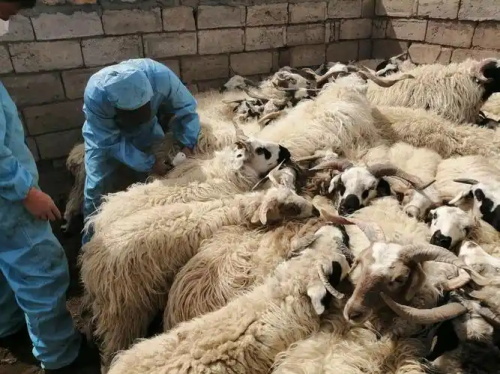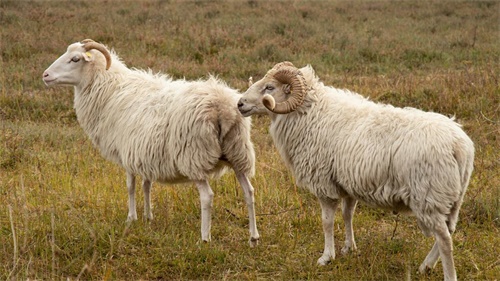Catching up over a cup of coffee, I might tell you about how much difference the right ultra-sound system makes when working with sheep and goats. It isn’t some abstract high tech—on the farm, using portable veterinary-grade ultrasound changes how I care for these little ruminants. Whether I’m checking pregnancy, tracking fetal health, managing body condition, or diagnosing diseases, having real-time, non-invasive imaging brings clarity and confidence to everyday animal care.

Why ultra-sound matters for small ruminant care
Every time I run a scan on a doe or ewe, I save time, reduce stress for the animal, and get information that’s otherwise guess-work. Unlike rough estimation by feel or visual signs, I can actually see what’s happening inside. It becomes simple to spot multiple fetuses, measure gestational age, detect placentitis early, or evaluate the muscle and fat condition for herd management.
Understanding the practical workflow
A typical scenario: scanning a pregnant goat around day 30 post-breeding, I locate the uterine horn, spot the gestational sac, hear the heart flickering—feel like celebrating a tiny heartbeat’s rhythm. Later, around day 50, fetal movement, organ development, clarity of amniotic fluid—gives peace of mind. If something looks off—fluid cloudiness, lack of movement—I intervene early.
Real-time insights guide better decisions
Seeing fetal development, managing nutritional adjustments becomes concrete. If body condition seems low, I tweak energy intake without overshooting. If I’m planning kidding, I monitor fetus weight trends, decide when to transfer to kidding pens, adjust shelter or feed accordingly. It feels like an ongoing conversation—with data.
Comparison: what I used to do vs today
| Challenge without ultra-sound | What ultra-sound brings |
|---|---|
| Guessing pregnancy by abdomen size | Confirmation of pregnancy, number of fetuses |
| Estimating body condition by touch only | Objective measures of muscle and fat layers |
| Late detection of complications | Early diagnosis—placentitis, fetal distress |
| Generic herd management by age or breed | Individualized plans based on development stage |
Tech features that help on the farm
Portable systems with battery operation and probe presets for small ruminants play nicely in barns. Freeze-frame images let me compare, measure, store archives. Doppler helps assess blood flow in cases of suspected abortions. I still prefer using B-mode scans for growth or pregnancy, but color modes assist when tracking placental perfusion.

A typical day with scanning
I usually pick a turnout day when all does are in a holding pen. Walk through them with the ultra-sound wand, greet each as I scan—calling them by name, patting their heads. Scans take just a minute or two each. By the end, I know exactly who’s carrying singletons, twins, or triplets. I can estimate due dates within a few days. I record these in my farm log. Later that afternoon, I update feeding groups: ewes with singles may need moderate energy, those with triplets get extra protein and energy. When kidding approaches, I check fetal position to anticipate difficulties.
Addressing common concerns about using ultra-sound
Some say it’s too expensive or complicated. I reply that you pay upfront, but afterwards you reduce losses, manage nutrition precisely, improve survival rates. Training takes a few weeks, but once you know positioning for sheep or goats, it becomes intuitive. Many local vet clinics now offer mobile scanning services—nice for hobby farms. I also teach interns: “Aim right behind the elbow, use gel, angle probe slightly downward for uterine view.” Within a month, they’re confident.
Beyond reproduction: other uses in animal care
Ultra-sound helps with musculoskeletal issues in small ruminants, too—detecting joint fluid, accessing abscesses, evaluating pneumonia-associated changes near the ribs. It also assists in lameness cases by imaging hoof soft-tissue. I’ve even used it to guide biopsies or fluid aspiration. Soft tissue visualization adds diagnostic value. Sharing findings with a vet often leads to faster treatment choices.
Words from overseas coworkers
A friend in New Zealand (working with kidded-heavy flocks) once told me their turnout scans helped reduce abortion losses significantly because early placental thickening got flagged. Another colleague in Scotland mentioned highland goat breeders speeding up kidding group organization because scanning revealed fetal counts early. Their stories echo my own: ultra-sound isn’t futuristic hype—it’s everyday support.
Summary of benefits
-
Real-time internal view of pregnancy and health
-
Early detection of reproductive or health issues
-
Objective monitoring of body condition
-
Supports targeted feeding and management
-
Venturing into non-reproductive diagnostics
-
Enhances training for apprentices and staff
Being able to scan small ruminants with a veterinary ultra-sound system has shifted how I approach daily care: more precision, less guesswork, better outcomes. When health, productivity, and welfare align, it feels less like managing livestock and more like nurturing a herd.